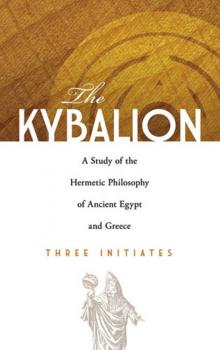ТОП просматриваемых книг сайта:















Dover Occult
Скачать книги из серии Dover OccultАннотация
R. H. Charles provides a definitive translation of one of the most noted apocalyptic works still in existence. Often described as «the lost book» of the Bible, The Book of Enoch seems to have been written in Palestine by several different authors in the first and second centuries B.C. For hundreds of years it was accepted by the early church fathers, but it was rejected by the council of Laodicea in A.D. 364. Today, it remains a written remnant of the Apocalypse—an ardent testament to hope and the triumph of good over evil in the dawning of a world to come. Rife with concepts of original sin, fallen angels, demonology, resurrection, and the last judgment, it is a vital document to the origins of Christianity.The Book of Enoch is comprised of various monumental works: The Book of Enoch, The Parables, The Book of the Courses of the Heavenly Luminaries, The Dream Visions, The Concluding Section, and The Noah Fragments. Each work is independent, but all the works are bound by a common theme: the punishment of the wicked and the blessedness of the righteous. This edition, complete with analysis and notes, is an indispensable resource for the study and understanding of both the Old and New Testaments.
Аннотация
Around the turn of the century, when Aleister Crowley was working out his system of Magick, the source that he turned to for basics was the system of Abramelin of Egypt. From Abramelin he took his concepts of protections, purifications, evocations, vestments, and dromena down to specific details.This system of Abramelin the Mage is known from a unique fifteenth century manuscript preserved in the Bibliothèque de L'Arsenal in Paris. In it, Abraham of Würzburg, a cabalist and connoisseur of magics, describes a tour that he made of the then civilized world, visiting sorcerers, magicians, and cabalists, estimating their powers and virtues. This quest is in itself as fascinating as the similar tours of Gurdjieff.The high point of Abraham's travels was found in a small town on the banks of the Nile, where he encountered the great magician Abramelin, whose complete system Abraham thereupon sets out in detail. This amounts to a complete course in ceremonial magic (both white and black), which the student can pursue by himself.Abramelin, whose system is based mostly on Hellenistic theurgy of the Iamblichan sort, but with Jewish increments from the Cabala, explains the qualifications needed to become a magician, purifications, and asceticisms to be practiced month by month, studies and activities permitted during this period, selection of place and time for working magic, equipment needed, prayers and formulas, evocation of good and evil spirits, commanding spirits to do one's will, overcoming rebellious spirits, and similar material. Specific instructions are offered to develop such powers as clairvoyance, divining metals and treasures, warding off evil magic, healing illness, levitation, transportation, rendering oneself invisible, creating illusions and glamour, reading minds, placing compulsions, working black magic, and a host of other abilities.We do not guarantee that Abramelin's techniques work, nor that the results are desirable, but we offer this as a genuine medieval course in magic, one of the most important books in the history of occultism. It is of paramount importance to both the historian and the practitioner.
Аннотация
Long used in telling fortunes and popular today among New Agers, Tarot cards are regarded by many as «the training wheels» on the bicycle of psychic development. Centuries of scientific progress have not diminished the irresistible attraction of gazing at picture cards to see the future and determine one's fate. This book by Arthur Edward Waite, the designer of the most widely known Tarot deck and distinguished scholar of the Kabbalah, is the essential Tarot reference. The pictorial key contains a detailed description of each card in the celebrated 78-card Rider-Waite Tarot deck, along with regular and reversed meanings. Contents describe symbols and secret tradition; the four suits of Tarot, including wands, cups, swords, and pentacles; the recurrence of cards in dealing; an ancient Celtic method of divination; as well as wonderful illustrations of Tarot cards.While the perfect complement to old-style fortune telling, The Pictorial Key to the Tarot also serves to make the Tarot entirely accessible to modern-day readers. It is also the classic guide to the Rider-Waite deck and to Tarot symbolism in general.
Аннотация
Rather than converting base metals into gold, Hermetic alchemists focused on elevating their mental forces to a higher level. The precepts of their philosophy remained shrouded in secrecy for more than 2,000 years, clouded by obscure language and dense allegories. This guide offers a modern interpretation of Hermetic doctrine, distilling its teachings into seven compelling principles that can be applied to self-development in daily life.For centuries, the legendary Egyptian man-god Hermes Trismegistus—regarded as the father of astrology, alchemy, and other magical arts—inspired writers and readers of occult literature. In 1908, the anonymous authors known as «Three Initiates» prepared this concise and engaging edition of the master's teachings. It outlines the Hermetic principles and then examines them in depth, offering direct quotations from the source material, followed by clear explanations. The best introduction to Hermeticism for beginners and adepts alike, this definitive edition of one of esoteric literature's classics explores principles relevant to any religious, spiritual, or magical tradition.




